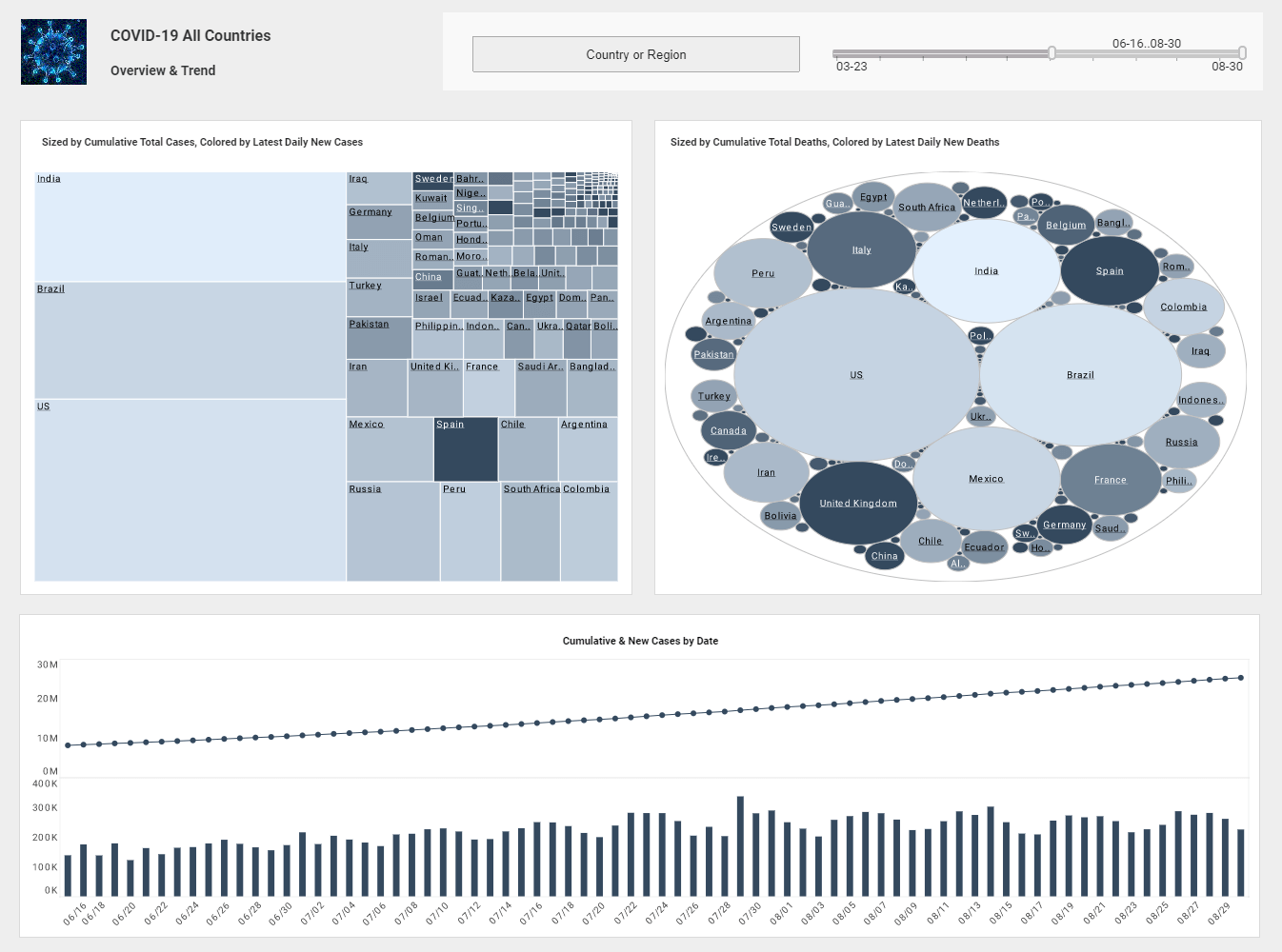InetSoft Webinar: Why Are BI Applications Still So Complex?
This is the continuation of the transcript of a Webinar hosted by InetSoft on the topic of "The Changing Requirements of Business Intelligence." The speaker is Mark Flaherty, CMO at InetSoft.
Now let’s talk about why are BI applications still quite complex? Well, the crux of the matter is that there is a big difference between data and information. Take for example the banking crisis, why could banks not foresee the crisis? They had all the data, but not the information. That’s precisely what business intelligence and analytics are all about. It is about translating that raw and meaningless data, those bits and bytes that you can’t really make sense by looking at them in raw form.
You need to translate data into meaningful, insightful, useful information that can help you make the decisions using BI. One of the problems with traditional BI implementations is that there are just so many BI tools to choose from. I am just showing a few here, but if we really decompose this to the lowest level of detail, we will typically count upwards of 40 different components all the way from the data sourcing kind of on the one side all the way to data information delivery, let’s say via portals or emails or alerts.
Anything in between is considered business intelligence or information management, and we can decompose this into about 40 plus components that need to be put together and that you need to understand the impact of and the data lineage for. You need to make sure they are tightly integrated. You need to debug them, etc.
| #1 Ranking: Read how InetSoft was rated #1 for user adoption in G2's user survey-based index | Read More |
As a result these types of traditional BI applications really don’t cut it anymore. It is still very-very difficult if you stick to these traditional approaches to keep up with the requirements. Business Intelligence requirements keep popping up left and right and at the speed of these traditional approaches just don’t let us handle that very well.
Even though we do see high interest levels in BI as you saw in some of the previous slides and statistics, the interest doesn’t necessarily translate into high maturity levels. As you see here year over year we do see relatively low maturities of BI, with very slight increases in penetration. It definitely is still not at levels that our clients themselves want to get to.
Another key reason for that is the kind of a risk that exists in the market. The gap and the low maturity also stems from the lack of alignment of business folks and IT folks. Successful BI is something that’s much more difficult to achieve in enterprises. Look at the different priorities of a business person. Look at the priorities of a business person who needs to be flexible and who needs to react to what’s happening today and who really cares about his business requirements more than anything else.
Now IT has to care about controlling risk and managing risk and adhering to standards. So the misalignment tends to pull the business intelligence environment in two different directions. So all that really points to a simple truth that even though we have got high interest levels in BI, the penetration levels of enterprise BI applications remains low.
You may see some kind of home grown desktop based BI applications, using Excel even, but really enterprise based BI application usage is still in the single digit in terms of percentage of employees. So that’s kind of the end of the bad news.
Read what InetSoft customers and partners have said about their selection of Style Scope for their solution for dashboard reporting. |
Now all good news: what do we do about this low BI pervasiveness? How do we address this gap? How do we close this gap? I think I already gave you the answer, the answer is in best practices and next generation BI technologies. And all of the best practices and technologies that I will talk about during the next 10 minutes can really be summarized in a theme of agility.
| Previous: The Gap Between Business Intelligence Requirements and Traditional BI Solutions |



